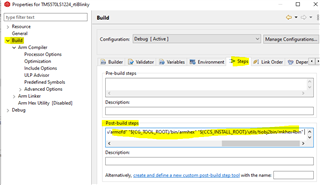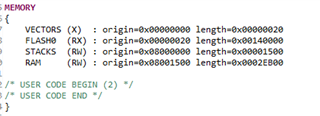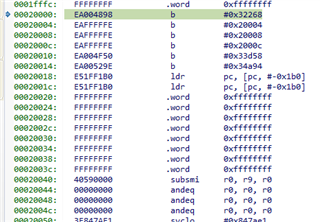Hello TI Team,
I am working on Bootloader design of TMS750Ls1227 part number. Once the Application hex file is flashed in memory by Bootloader, Jump to Application is done. But the Application is not executing properly.
From the previous articles on Forum, it was found some changes to be done in cmd file and intvec.asm file. But after taking into those guidelines into consideration, still the same problem persist.
What should be the correct way of writing cmd and intvec.asm file for both Bootloader and Application? Or any other changes ?





